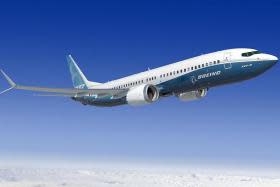Off-duty pilot saved Lion Air Boeing 737 Max the day before crash
An off-duty pilot onboard a Lion Air flight saved a Boeing 737 Max jet from catastrophe the day before the October 2018 crash that killed 189, it has emerged.
The ongoing investigation into the Lion Air incident, when a Boeing 737 Max plane crashed into the Java Sea just minutes after take-off from Jakarta on 29 October, showed that the malfunctioning jet was saved from disaster by a third pilot who was riding in the cockpit the day before.
As the crew struggled to control the diving Max 8 aircraft, which was flying from Bali to Jakarta, the pilot diagnosed the problem and instructed them on how to disable the flight control system, sources told Bloomberg.
Just a day later, the same problem emerged onboard the Lion Air aircraft, which quickly lost control and crashed shortly after leaving Jakarta for the city of Pangkal Pinang, just north of Sumatra.
This detail hasn’t previously been released, and wasn’t included in the Indonesian aviation authority’s November report, which said that the plane was not “airworthy” and had suffered similar problems on earlier flights.
Lion Air spokesman Danang Prihantoro told Bloomberg: “All the data and information that we have on the flight and the aircraft have been submitted to the Indonesian NTSC [National Transportation Safety Committee].
“We can’t provide additional comment at this stage due the ongoing investigation on the accident.”
Read more
Boeing 737 Max grounded: What is the impact on European airlines?
The Boeing 737 Max jet was grounded worldwide following an Ethiopian Airlines crash on 10 March that killed all 157 onboard. Initial data suggests the two accidents followed very similar profiles, according to Ethiopia’s transport minister.
Investigators are focusing on the new anti-stall system installed on the Boeing 737 Max jets, which is known as the “Manoeuvering Characteristics Augmentation System” or MCAS.
The system is designed to kick in if the angle between the wings and the airflow, known as the “angle of attack”, gets too steep and a stall looks feasible.
The initial report into the Lion Air crash shows that MCAS was activated a dozen times.



